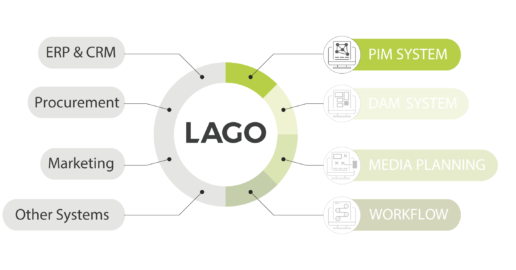Successful Christmas sales: how retailers can score points with an omnichannel strategy and AI technology
Christmas sales are the most important phase of the year for many retailers. Often 30-50% of annual sales are generated in just a few weeks. However, the increasing complexity in retail – both online and offline – also increases the challenges. If you want to shine in the Christmas season, you need more than just festive shop windows: a well thought-out omnichannel strategy, integrated tools and smart technologies such as predictive AI are the key to success.
The biggest challenges in the Christmas business
While Christmas is the busiest time of the year for many retailers in terms of sales, it also brings with it numerous challenges. One of the biggest hurdles is volatile demand: if you don’t plan early and based on data, you run the risk of selling out of top sellers or having an abundance of slow sellers in stock. At the same time, the demands on logistics are increasing – customers expect smooth, fast delivery, even if shipping service providers reach their limits due to the high volume. In addition, the rate of returns is increasing, particularly in online retail, which requires efficient returns handling processes.
At the same time, customers today expect a seamless shopping experience across all channels – whether they are researching online and buying in-store or vice versa. Retailers must ensure that product information, prices and availability are consistent and up-to-date – regardless of the touchpoint. If you fail to dovetail all of these factors, you not only risk losing sales, but also disappointing customers.
New technologies: predictive AI & automation
The use of artificial intelligence (AI) and predictive analytics is transforming the retail sector – especially in the hot phase around Christmas:
Predictive inventory management
AI analyses sales data, weather, trends and external signals (e.g. social media) – and predicts demand. This optimises inventory planning and avoids bottlenecks.
Personalised product recommendations
AI algorithms analyse customer behaviour in real time and make context-related recommendations – in the shop, in emails or via the app.
Automated fulfilment
Modern systems automatically select the best warehouse or the nearest store for delivery. This saves time, shipping costs – and nerves.
Live dashboards & real-time monitoring
Predictive tools identify trends, bestsellers and potential problem areas at an early stage. This allows retailers to react during the season – not just in January.
Why omnichannel is indispensable
Omnichannel software ensures that sales channels are not isolated from each other, but are synchronised and networked. For the Christmas business, this means
-
- Central inventory management - real-time availability across all channels
- Click & collect / ship-from-store - flexible fulfilment options
- Consistent prices & promotions - no more customer irritation
- 360° customer view - personalisation across all channels
Here is an overview of important tools in an omnichannel context:
-
- Merchandise management
- POS system
- PIM (product data)
- Order Management (OMS)
- Marketing Automation
- Analytics
- Warehouse automation
Must-have tools for a successful Christmas business
Many companies do not rely on a software monolith, but on a best-of-breed approach. An omnichannel system such as LAGO serves as a data and control centre to which the following systems dock:
-
- Product data (PIM/DAM)
- Sales platforms (POS, web shops, marketplaces)
- Logistics & merchandise management (ERP, OMS)
- Marketing & customer communication (CRM, CDP, automation)
- Business intelligence (analytics & AI)

Our experts take time for you: discover in a customised demo how LAGO fits exactly to your requirements – practical, easy to understand and impressively powerful.